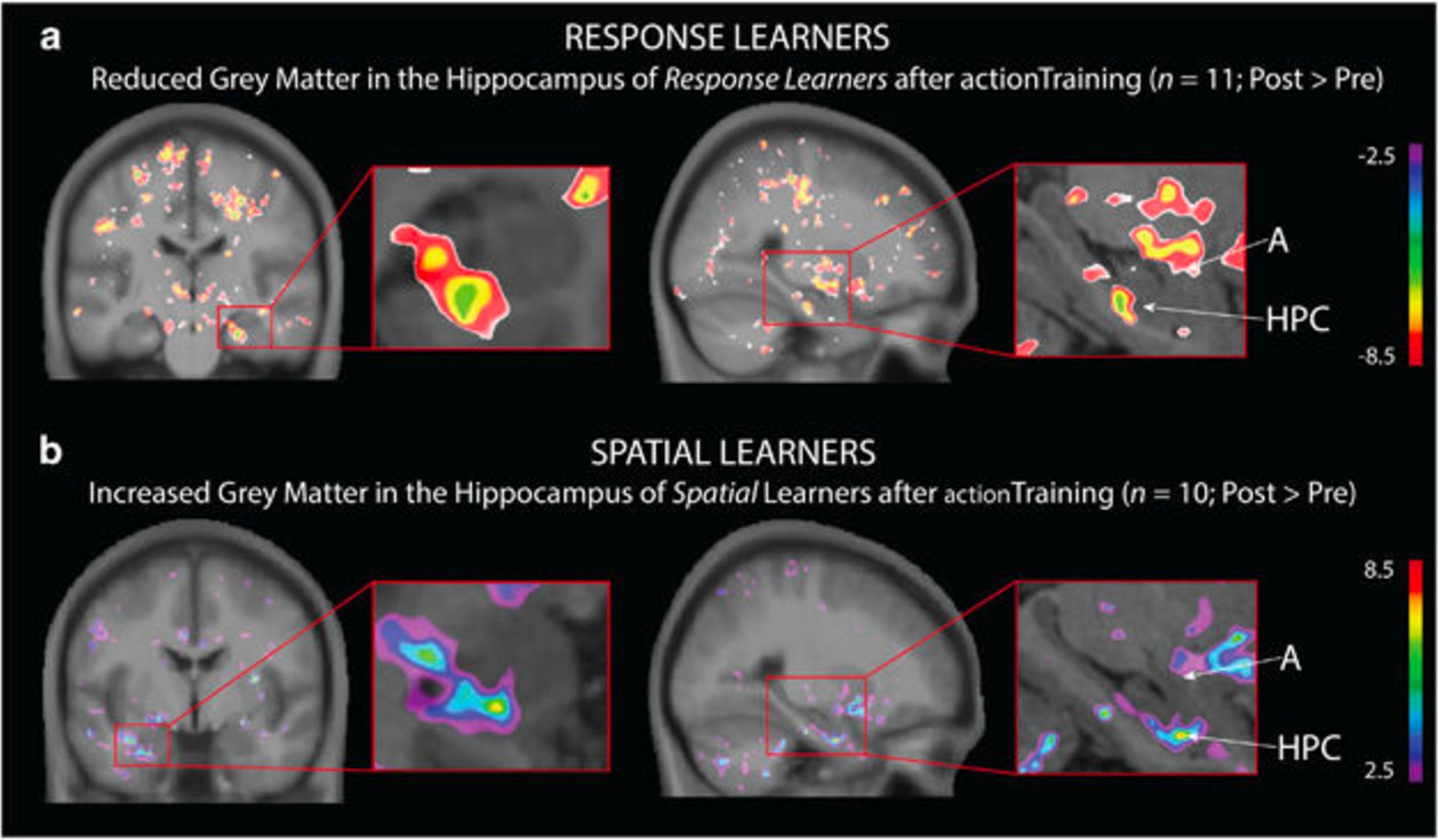Video games can either grow or shrink part of your brain, depending on how you play
If you’ve ever played a first-person shooter video game, at some point you’ve probably had to remember how to get from one place within the game to another. Perhaps you tend to think spatially, and plotted your path by judging where your destination was in relation to landmarks and objects. Or maybe you’re more methodical, and navigated by memorizing directions—right, then left, then left again, then right—without considering the environment.


If you’ve ever played a first-person shooter video game, at some point you’ve probably had to remember how to get from one place within the game to another. Perhaps you tend to think spatially, and plotted your path by judging where your destination was in relation to landmarks and objects. Or maybe you’re more methodical, and navigated by memorizing directions—right, then left, then left again, then right—without considering the environment.
A new study published in Nature has found that using the first method can increase the gray matter in your brain, while the second method can decrease it.
The study, conducted over four years at the University of Montreal, recorded brain scans of players before and after they played first-person shooters for 90 (non-consecutive) hours. It found a reduction in gray matter in every participant who navigated games like Call of Duty and Medal of Honor using memorized directions, or “non-spatial memory.” In participants who navigated using landmark-based spatial memory, however, the researchers found an increase in gray matter. The researchers determined how people navigated by sending them through several versions of a maze in virtual reality, then asking them how they managed to get to the end.
First-person action games were the only types of games that sometimes led to gray matter reductions. When participants played 3D platformer games like Super Mario 64, as opposed to first-person shooters, their gray matter increased regardless of how they navigated.
The gray matter changes occurred in the hippocampus, the part of the brain believed to be central to memory. It is “a structure important for healthy cognition across people’s lifespan,” the study says, and is “centrally involved in many functions including spatial navigation, episodic memory and stress regulation.”
Whether more or less gray matter is a good or bad thing isn’t clear-cut, according to the researchers. But they point to one study of taxi drivers in London, which found that an increase in gray matter in the hippocampus could improve their spatial memory. ”In other studies, a larger hippocampus was associated with better episodic memory and healthy cognition,” they write.
That, they say, suggests video games aren’t necessarily good for brain development, as some people assume. “For example,” they write, “action video games are currently being recommended to be played by children, young adults and older adults to promote cognitive skills such as visual short term memory and visual attention. The present results suggest that improvement in such cognitive skills may come at a cost, which is yet to be determined.” Whether the changes in the hippocampus have a long-term effect likewise remains an open question, they say.